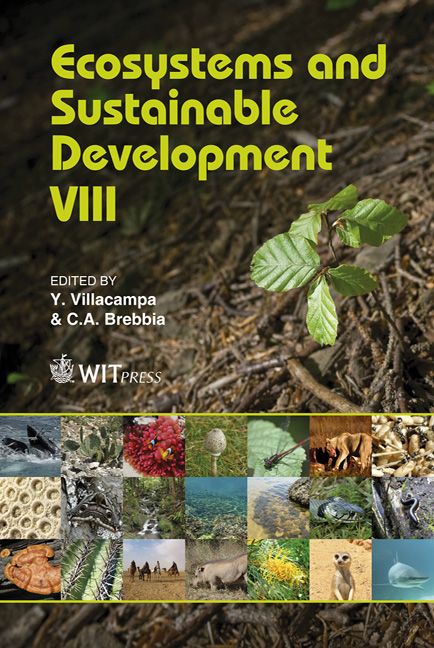Sustainable Development Indicators For Integrated Coastal Management: Definition Area And Spatial Properties
Price
Free (open access)
Transaction
Volume
144
Pages
13
Page Range
299 - 311
Published
2011
Size
3,171 kb
Paper DOI
10.2495/ECO110271
Copyright
WIT Press
Author(s)
J. Kaulins, R. Ernsteins & I. Kudreņickis
Abstract
When designing a sustainability indicator system (SIS) within the integrated coastal management (ICM) development process, there are still to be encountered a number of difficulties in the constructing of the system both in the indicator selection process and later when analysing the system and assessing its degree of correspondence to the direct objective of application, reflecting the set of planning targets and accounting for the specifics of the particular coastal territory. During research and development work in the coastal municipalities in Latvia, particularly, in Saulkrasti municipality, there was developed municipal level SIS, being locally discussed and acknowledged by experts and municipality specialists. Saukrasti SIS was developed, based on the adaptation of the known theoretical approaches and previous national case studies research done. This practice based experience also gave an inspiration for a number of theoretical generalisations about coastal indicators definition area, their spatial properties and, especially, algorithmic scheme for designing sustainability indicators. Keywords: indicators, algorithm, coastal zone, integrated management, sustainability capitals, spatial, governance 1 Introduction to indicators definition In the literature on measuring sustainable development, a number of sustainability indicator definitions by different authors and institutions can be found being based mainly on two approaches: conceptual and functional [1]. As the name suggests, conceptual definitions are derived from the indicator concept itself and are important for understanding it. According to FAO definition [2], an indicator is defined as a variable, pointer, or index related to a
Keywords
indicators, algorithm, coastal zone, integrated management, sustainability capitals, spatial, governance





